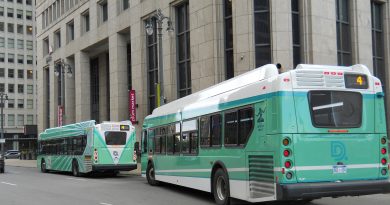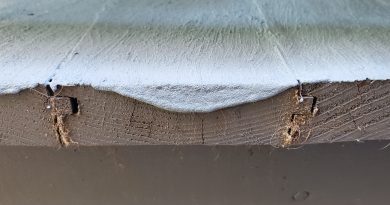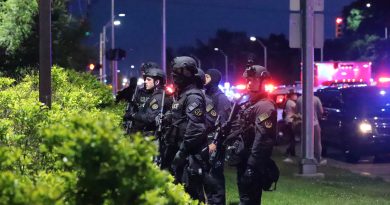Low-Density Redevelopment of The Most Iconic Vacant Site In The City Is Just So Detroit
Construction crews recently broke ground on the long-awaited redevelopment of the former Navin Field / Tiger Stadium site in Corktown, which is to be turned, variously, into a youth sports facility for the Police Athletic League and a 105 apartments, 35 townhouses, and some retail. It’s a welcome bit of investment for the years-vacant site, but also highlighting how we could probably stand to think denser in a city that is facing an increasing shortage of good housing.
I might be wrong that this is the most iconic vacant site in the Detroit Metro, but I was hard pressed to come up with an alternative. After all, it was deeply rooted in Detroit’s history, throughout the city’s booms and busts, and was a legendary venue: 100 million fans saw the Tigers play here for nearly a century, from 1912 (the year the Titanic sank, a few years after the Chicago Cubs won the Series) to 1999 (just under two decades before the Cubs won their next Series). Dan Austin wrote a great piece on The Corner.
In comparison, the Hudson’s site downtown stopped attracting visitors when it closed in 1983 so, while more stately than the then pretty jank Tiger Stadium, its demolition predated the stadium’s by decades. The Silverdome in Pontiac, where the Lions played from 1973 to 2006, was truthfully, in its last years, more derided than recognized, and its decay long before its demolition prompted more descriptions of “postapocalpytic” than “charming bit of local history.” Runners up included the Packard Plant, which maybe we will get around to developing some time— iconic in its monumentalism, but more of a curiosity for urban planning geeks the Fisher Body Plant 21 in Milwaukee Junction (which bears the dubious distinction of being probably the most seen site on a day-to-day basis based on highway traffic on I-75 and I-94), and Moroun’s Folly, a.k.a. Michigan Central Station, also in Corktown.

Kwame’s administration oversaw the demolition efforts, led by DEGC and the demolition contractor itself, which wanted to make money off the scrap metal. Sentiment at the time targeted even lower density, suggesting that “up to 100” residential units could be built on the 9.5 acre site.
The site sits at the northwest corner of Trumbull and Michigan Avenues, Trumbull being a major north-south arterial running from New Center (Henry Ford Hospital) through residential Woodbridge, then through Corktown and south to Fort Street, and Michigan, a.k.a. Zero Mile, is the major non-freeway linking Dearborn, Southwest Detroit, and downtown Detroit via Corktown. The sidewalks thronged and streets packed on game days with drunk white people headed to see the Wings, the eastbound stretches jammed with inbound commuters on weekday morning, and the westbound stretches the same in the evenings. Ten thousand cars per day down Michigan (up to 20,000 closer to Dearborn), 7,400 on Grand River (which feeds traffic onto Trumbull), according to MDOT.
Is A Denser Corktown A Thing?
The site is about 400,000 square feet, 9 1/2 acres, with 575 feet of frontage along Michigan Avenue which, thankfully, according to the renderings, appears to be occupied with four-story buildings. 151 units at 900 square feet apiece would actually work out to a reasonable density if we assume that only the southern third of the site is to be developed, a floor-area ratio of about 1.00. I can’t say I’m surprised that a largely suburban police force would contribute to the building of a largely suburban-style development, but my critique here may be an unfair extrapolation– what would a high-density urban sports recreation center even look like?
According to LOVELAND’s Motor City Mapping, Corktown, considered one of the “coolest nabes” in Detroit (…don’t say that, by the way), has a mere 449 structures, of which only 359 were definitively occupied as of their last survey, and 386 vacant lots. CityData counts 1,069 residents at a pleasant, Iowa farm town density of 2,604 people per square mile (about half of Detroit’s average), while Data Driven Detroit counts 1,196 residents (with slightly different boundaries). As I’m all about understanding how perception or misperception informs decisionmaking, I’d just point out that this density is pretty low.

Can it be developed? Who knows: As is often true with vacant land, ownership of the spaces is often somewhat mysterious, as in the case of the maybe-Livonia-based Khalil Brothers enterprise, for example, which owns a large swath of space. The total– excluding the spacious pair of lots that include the White Castle between Vermont and Rosa Parks- accounts for over a million square feet, of which the Tiger Stadium / Navin Field site occupies a full third (much of the vacant space to the immediate west of the stadium was used to supply surface parking for the games). The vacant, buildable land (1.15m s.f.) is almost exactly half of the total area in the entire district, that is, the whole way from 14th St. on the west to the Lodge on the east (streets included).
Considering the red lines along Michigan Avenue and excluding the White Castle (I ain’t trying to mess with anybody’s sliders) and the attractively landscaped parking lots for the Grinnell Lofts (we’ll let them slide), still about a full half of the frontage along Michigan Avenue is completely undeveloped, and that which is developed is almost entirely one or two story buildings. The Tiger Stadium site alone accounts for 1/3 of the total vacant frontage and about 1/6 of the total street frontage.

How much could we legitimately squeeze in there? Assuming a floor-area ratio of 1.25 (see a cute little bit about visualizing density and FAR here), that would mean that we would build 1.25 square feet for every square foot of lot. Assuming your average sizes for apartments, which have been shrinking in recent years, this would work out to about 1,607 new units. Fortunately, the byzantine B4 classification, which allows pretty much anything and covers most of the district, permits FAR of up to 2.00 (even if it has preposterous setback requirements)– so let’s go up to 2.00, which brings us to 2,570 apartments.
At the conservative FAR = 1.25 and no variances required under the B4 classification (I honestly have no idea what zoning variances are like in Detroit but I bet they are easier to get than in East Chicago), we would increase Corktown’s population by 135%. Is Detroit ready for the resulting 20,000 people per square mile who would at that point occupy the 0.08 sq. mi. space between I-75 and Michigan Avenue? I mean, sign me up, but you’re talking about $150-200 million in investment to get that done.
I’m glad for the investment, but we may have to hold out for denser development elsewhere in Corktown, maybe Tony Soave’s actually decently high density, long-rumored Taxi Lofts, which would add 151 housing units just across the street on Trumbull. Scale is important: When these two projects are finished, we’re still talking an increase in population density of 4500-5500 people per square mile, which almost brings Corktown up to a reasonable density. But… baby steps!



